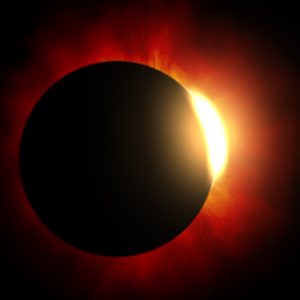 On August 21, the moon will pass directly between the Earth and Sun, essentially blocking the Sun for a short period. Known as a “total solar eclipse,” it’s expected to block all direct sunlight while subsequently turning daylight into darkness. In comparison, a “partial solar eclipse” only blocks part of the sun’s light from reaching Earth.
On August 21, the moon will pass directly between the Earth and Sun, essentially blocking the Sun for a short period. Known as a “total solar eclipse,” it’s expected to block all direct sunlight while subsequently turning daylight into darkness. In comparison, a “partial solar eclipse” only blocks part of the sun’s light from reaching Earth.
This upcoming eclipse is significant for several reasons. For starters, it’s the first total eclipse that’s expected to be visible from mainland United States since February 1979. The path of the eclipse will travel through 14 states, allowing millions of Americans to marvel at this cosmic phenomenon. And being that it’s part of the Saros series 145 eclipses, it will last for a longer duration than previous eclipses in this series.
But if you’re planning to gaze at the upcoming eclipse, there are a few things you should know. The National Aeronautics and Space Administration (NASA) has published some helpful safety guidelines to protect onlookers from eye injury.
As explained by NASA, the only safe method for viewing a solar eclipse is through special solar-filtered lenses. While a quick glance isn’t going to make you blind, prolonged staring can cause partial or complete blindness due to excess ultraviolet (UV) light exposure. The sun’s UV rays are amplified during an eclipse, allowing more of these powerful rays to hit Earth. If you stare at the eclipse, it may cause significant damage in the form of abnormal tissue growth and the development of cataracts.
The bottom line is that you need to wear special solar-filtered lenses when viewing the upcoming total eclipse. This means you shouldn’t look at the eclipse using a telescope, binoculars, smartphone, camera or other non-approved device. Only use special lenses that have been designed specifically for viewing total solar eclipses.
Additionally, be sure to look away from the eclipse before removing your solar-filtered lenses. Removing the lenses while still looking towards the eclipse could result in high-UV exposure to your eyes.
“The only safe way to look directly at the uneclipsed or partially eclipsed sun is through special-purpose solar filters, such as “eclipse glasses” (example shown at left) or hand-held solar viewers. Homemade filters or ordinary sunglasses, even very dark ones, are not safe for looking at the sun; they transmit thousands of times too much sunlight,” explained NASA.
For a complete list of eclipse-viewing safety tips, check out NASA’s website here.



